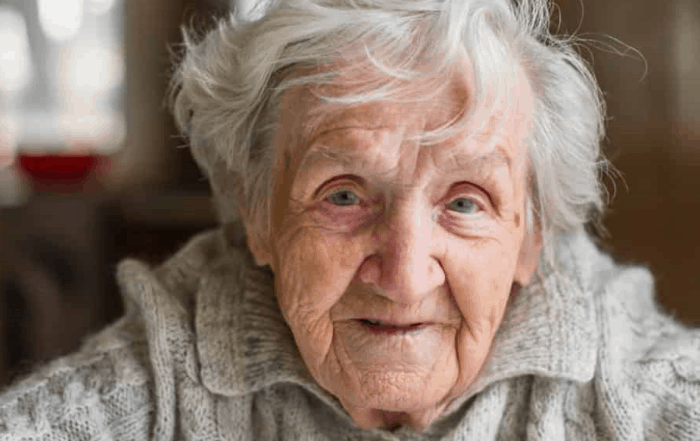
Twenty years ago there was much talk but little action about the inevitable onslaught of children and teenagers on the autism spectrum reaching adulthood. Whether it was hesitation or procrastination, private and public agencies delayed planning, and the autism community is now scrambling to figure out ways to best provide needed support and services to young adults on the spectrum. A similar scenario is starting to play out with respect to seniors with autism. Today there is little discussion about individuals with autism reaching their senior years even though three notable individuals on the spectrum have reached this age-related milestone.
Donald T. is considered by many to be the first “official” child to be diagnosed with autism. Donald was case #1 in Dr. Leo Kanner’s seminal paper, Autistic Disturbances of Affective Contact, published in 1943. Donald, then five years of age, exhibited many of the characteristics often associated with “classical” autism or Kanner’s syndrome including a preference to be alone, engagement in repetitive behaviors, echolalia, and an exceptional memory.
Donald is now in his early 80s and lives in Forest, Mississippi. He is well-accepted and active in his community. He drives a car, plays golf, and spends time with the locals. In a recent historical book on autism, In a Different Key: The Story of Autism, and in their article in The Atlantic, John Donvan and Caren Zucker wrote in detail about Donald’s early years as well as his current lifestyle. www.DonaldT.com to read about him as well as watch a video.
Dr. Temple Grandin, age 68, continues to be a true inspiration not just to individuals on the autism spectrum and their families, but to the entire world. She is famous for her tireless efforts to promote the humane treatment of animals as well as for the insight and support she offers to families and professionals in the autism community. She is a celebrity in every sense of the word, and her books become instant must-read best sellers worldwide.
Dr. Rimland’s son, Mark, turned 60 last month (March 2016). As most of you know, Mark’s autism inspired his father to dedicate nearly 50 years of his life to autism, as a researcher and parent advocate. Mark lives with his mother and younger brother, attends an adult school for individuals with developmental disabilities, and continues his passion for creating art (watercolors, acrylic, and mosaics). Mark can ride the bus on his own and has many friends in his neighborhood.
The Ever-Pioneering Parents
Parents of seniors on the autism spectrum are strategizing about how their sons and daughters will receive appropriate support services when they can no longer care for them. These are the parents from the generation who were blamed for causing their young child’s autism. Although Dr. Rimland’s work led to the end of parent blaming, these seniors today were at least 10 years of age when his seminal book, Infantile Autism, was published in 1964.
These same parents had to rally and pressure the government in the 1960s and early 1970s to provide public education for children with disabilities. Their efforts culminated in the passage of the Individuals with Disabilities Education Act. When their teenagers reached adulthood some 40+ years ago, these are the same parents who had to figure out ways to support them beyond their school years.
Tom Brokaw used the phrase “the greatest generation” to describe military personnel who returned to the U.S. after World War II and made a real difference in providing stability and depth to American society. Brokaw once described these soldiers as “… ordinary people whose lives were laced with the markings of greatness.” The greatest generation also applies to these pioneering and rarely recognized parents who strove for optimal, not minimal, support and education for their children as well as for future children.
The Numbers
How many seniors are on the autism spectrum? At first, this appears to be a difficult question to answer, especially since the CDC’s prevalence statistics focus primarily on children. However, one can easily estimate a prevalence range given past and current published incidence rates.
As many of you know, there is much debate about whether the relatively high prevalence rate of 1 in 68 reflects an actual increase in autism over the past 30 years or an “apparent” increase due simply to better awareness, resulting in more diagnoses of autism.
If one assumes that the prevalence rate of autism has increased in the past three decades, then the estimated prevalence rate before the 1980s was 1 in 2,000 children. The 2013 U.S. census reports 63 million people who are age 60 and older. This would amount to 31,500 seniors with autism in the U.S. Using a less conservative statistical approach, if one assumes that the prevalence rate of autism has always been 1 in 68, this would total to 926,500. In either case, the main point is that there are tens of thousands or possibly even hundreds of thousands of people on the autism spectrum in their senior years. If one were to harbor an educated guess, there are approximately a half-million seniors on the autism spectrum in the U.S.
Planning for the Senior Years
The needs of seniors on the autism spectrum are different from the needs of those who are in young adulthood or middle age. One big difference is their living situation, which may present uncertainties. Many, if not most, adults on the autism spectrum live with their parents, and these parents may no longer be able to care for them in the not-so-distant future. These seniors on the spectrum will someday need to move into another living situation, such as with another family member, in a group home, or possibly living semi-independently or independently.
It is important to point out that medical problems common in children and adults on the autism spectrum may likely continue or even become much worse in their senior years. That is, many of the medical co-morbidities associated with autism are common in the elderly population as a whole. These include gastrointestinal and immune issues, sleep problems, seizures, sensory sensitivities, and low bone density. These possible health-related challenges need to be understood and taken into account with regard to appropriate healthcare and residential placement.
Besides health-related issues, cognitive processes often decline in the senior years. Many children and adults on the autism spectrum already have difficulties in executive processing and memory. How will their cognitive abilities change in advancing years?
Over the past 40 years, a number of reports have been published related to neuropathologic observations in the postmortem brains of autistic adults, studied in comparison to age and sex-matched controls. To date, there has been very little focus on the aging brain in autism or potential correlations with disorders such as depression, anxiety, or dementia. Whether this is due to lack of clinical data available at the time of death, the small numbers of brains available in individuals with ASD over the age of 60 years, or the fact that neuroanatomic research related to autism has been more directed to trying to understand underlying neurobiological mechanisms is uncertain. Of potential interest is the fact that there have been a few recent publications that have hypothesized that there may be some neuroprotective factors at work in the autistic brain that may reduce the probability of the autistic individual developing some of the common age-related disorders as they age. These suggestions would be consistent with the general finding that testosterone levels, which are considered high in many individuals on the spectrum, may provide some form of protection against neurological problems associated with aging.
Online Autism Senior Survey
We believe it is urgent for us to better understand the characteristics and needs of seniors on the autism spectrum. We recently began a research project to learn about various issues associated with aging in autism. A survey was recently posted online that includes questions on medical problems, sensory challenges, and behavioral issues as well as various aspects of living situation and lifestyle (e.g., recreation, daily living, and emotions).
If you are on the autism spectrum and are 50 years of age or older, we would appreciate your completing the online survey located at www.ASDSeniorSurvey.com. We also encourage family members who have a son or daughter or sibling on the autism spectrum to fill out the survey.
We would also appreciate donations to help support and expand our efforts to understand in more depth the medical issues associated with autism and aging. Donors who contribute $100 or more will receive an autographed gift copy of the book, The Secret Night World of Cats, which was illustrated by Mark Rimland and written by Helen Landalf, Mark’s sister.
By Stephen M. Edelson, Ph.D., Autism Research Institute, and Margaret L. Bauman, M.D., Boston University School of Medicine
Autism & Aging – Cognition and Well-being
Hilde Geurts, Ph.D., discusses the impact of aging on health, quality of life, and cognition in autistic adults. She discusses aging in the general population and how it relates to autistic
Lifestyle issues play role in shorter life expectancy
Individuals with autism spectrum disorders (ASD) have a shorter life expectancy than people in the general population, and a new study suggests that lifestyle issues play a large role in shortening
Middle and Older Adulthood in Autism: Brain and Behavioral Outcomes
Dr. Gregory Wallace dives into available research on health and quality of life outcomes associated with aging in autism. He discusses possible links between Parkinsonism and autism and details how
Research Updates on Maternal Autoantibodies and ASD
Judy Van de Water, Ph.D., discusses current machine learning research used to identify several patterns of maternal autoantibodies associated with the diagnosis and severity of autism. She outlines the history of
Report from a Think Tank on Aging and Autism Published
In 2017, Autism Canada, The Pacific Autism Family Network, and ARI facilitated a think tank on ASD in adulthood and later life in Vancouver, BC. Meetings focused on collaboration around common priorities
Capacity-Building in Adult Services
Linda Walder Fiddle, founder of The Daniel Jordan Fiddle Foundation, possesses singular optimism and vision when it comes to advancing the quality of life and citizenship for adults with autism spectrum disorders.







